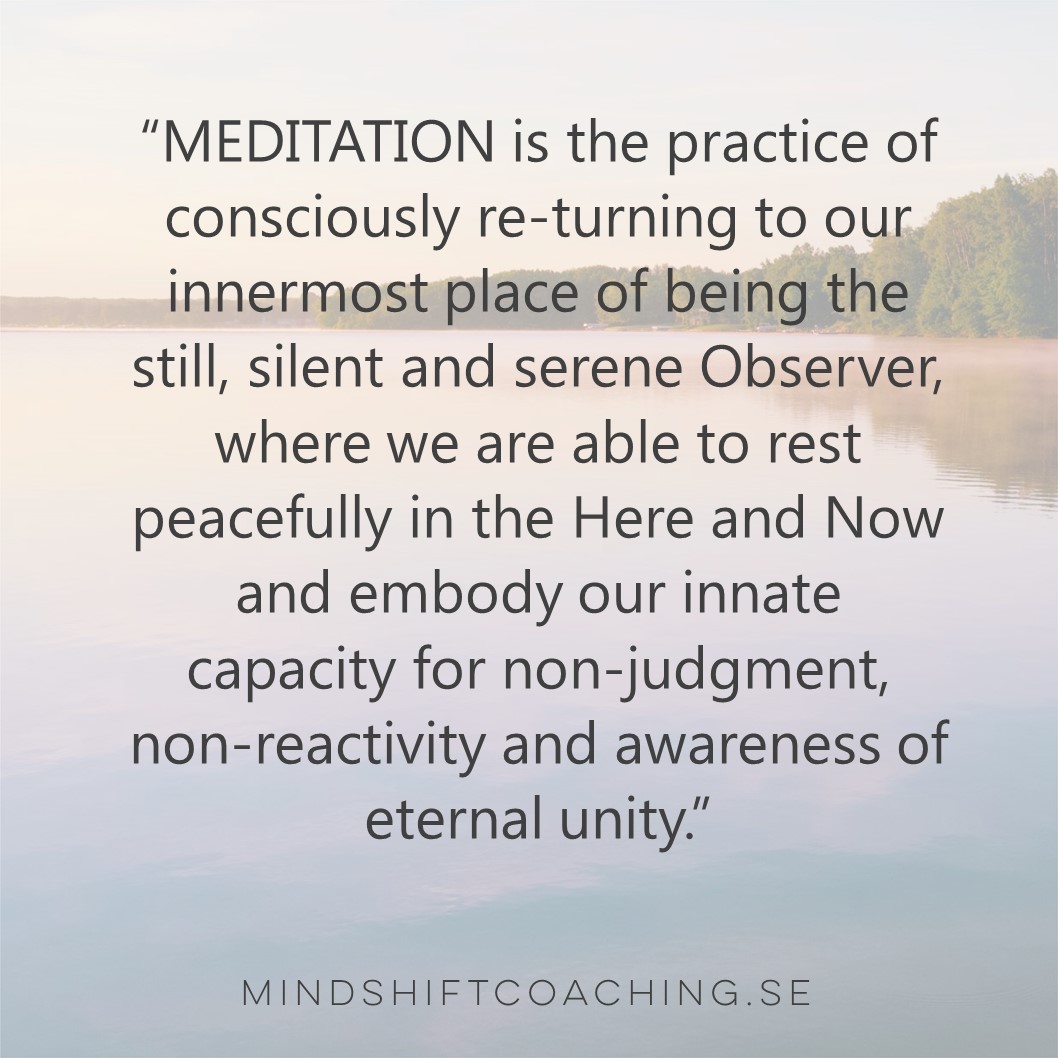
For many people, finding time and space for “stillness” can be difficult in modern everyday life. Yet, being still has many highly valuable benefits for our health and wellbeing, as proven by research. When we still ourselves, by sitting or laying down, closing our eyes, and turning our attention inward, we are able to tune into our bodily sensations and become aware of our thoughts and feelings, and ultimately, listen to our inner voice. People who practice meditation, mindfulness, yoga, or similar forms of centering practice on a regular basis are well acquainted with the calming, deeply relaxing and even healing outcomes of being still. For others, however, practicing stillness can be difficult to “make happen” on most days, perhaps even on vacation.
Words from Ancient Teachings
In the Old Testament, there is a famous verse that reads: “Be Still, and Know that I am God.” (Psalm 46:10). When we are still and focus our attention inward, we can align with our inner “center point”. Some people call this place our “Soul center”. Others describe it as our “True or Higher Self” or “Essence”. Still others refer to it as “God within” and believe it to be the place where we are “One with God”. Regardless of how we phrase it, it is the place where we become witness to our external conditions, as the events, people and environment around us. Even more importantly, it is also the place where we can observe our inner reality, as our thoughts, feelings, and physical sensations. In other words, we become the Observer as opposed to the Reactor. Thus, when we lean back into our center point, we distance our awareness away from our random thoughts, associated feelings, and any discomfort in our body. As the Observers of our reality, we can begin to detach from (or let go of) our fears, worries, expectations, desires, etc. After sufficient mindfulness practice, we can eventually experience moments of “equanimity” (or inner calm) and even so-called “enlightenment” (or spiritual awakening).
Buddha wrote at great length about how to attain equanimity and enlightenment through various practices of mindfulness and surrendering. According to the buddhist monk Bhikkhu Bodhi, “The mind of equanimity is compared to the driver of a chariot when the horses are moving at a steady pace: he neither has to urge them forward nor to hold them back, but can just sit comfortably and watch the scenery go by.” (The Noble Eightfold Path, 1998). Jesus also encouraged us to loosen our strings to the outer world with his saying: “Be passersby” (Gospel of Thomas, Saying 42). In the same Gospel, Jesus also encourages us to seek the “treasure that is unfailing, that is enduring, where no moth comes to eat and no worm destroys.” In other words, the enduring treasures are rarely found in the outer world, but rather in the spiritual or relational inner world.
Your answers are found within…
In our modern lives, it is easy to become distracted by the constant flow of information and outer impressions, especially if you are an extrovert. Yet, often, it is not in the outer world where we find our most valuable answers and unique ideas, but within. When we practice meditation, or let our minds rest in effortless wandering, for example while sitting on the bus or taking a shower, we are suddenly given the very answers that we seek.
Our “inside” is nothing like an empty dull well, but rather like a flourishing garden where we can find our greatest treasures. Our innermost reality has understandably been likened to a Kingdom, as portrayed in the Gospel of Luke: “Now when He was asked by the Pharisees when the kingdom of God would come, He answered them and said, “The kingdom of God does not come with observation; nor will they say, [See here!’ or ‘See there!’ For indeed, the kingdom of God is within you.” (Luke 17:20-21, New Testament)
 Moreover, Emmet Fox, one of the most popular New Thought Leaders of the early 20th century in the US, wrote: “It is being still to know that God is God. Such ‘stillness’ is the reverse of laziness or inaction. The still dwelling upon God is the quietest but the most potent action of all.” (Source) In other words, the practice of stillness need not be a passive act, but can be a continuous adventure of exploring your ever-unfolding unknown. Regardless of what you may be expecting, being still and going within can lead you to the very answers that you have been seeking, and to the peace of mind and heart that you have been longing for. At least, it will be a journey worthwile taking.
Moreover, Emmet Fox, one of the most popular New Thought Leaders of the early 20th century in the US, wrote: “It is being still to know that God is God. Such ‘stillness’ is the reverse of laziness or inaction. The still dwelling upon God is the quietest but the most potent action of all.” (Source) In other words, the practice of stillness need not be a passive act, but can be a continuous adventure of exploring your ever-unfolding unknown. Regardless of what you may be expecting, being still and going within can lead you to the very answers that you have been seeking, and to the peace of mind and heart that you have been longing for. At least, it will be a journey worthwile taking.
In the image (above), I share my own definition of “meditation”. To me, it is “the practice of consciously re-turning to our innermost place of being the still, silent and serene Observer, where we are able to rest peacefully in the Here and Now and embody our innate capacity for non-judgment, non-reactivity and awareness of eternal unity.” Yes, lots of words, but hopefully something worth contemplating…
For more inspiration, see this article “The Outer Guard Position vs The Inner Soul Center“.
PS. This article was first written as a “newsletter”, which was sent out in November, 2021.
Coaching on to the Spiritual and Existential
 If you wish to talk about existential and/or spiritual aspects of human life, or if you are facing a personal existential challenge or crisis in your own life, warm welcome to contact me. (Read more here.)
If you wish to talk about existential and/or spiritual aspects of human life, or if you are facing a personal existential challenge or crisis in your own life, warm welcome to contact me. (Read more here.)
